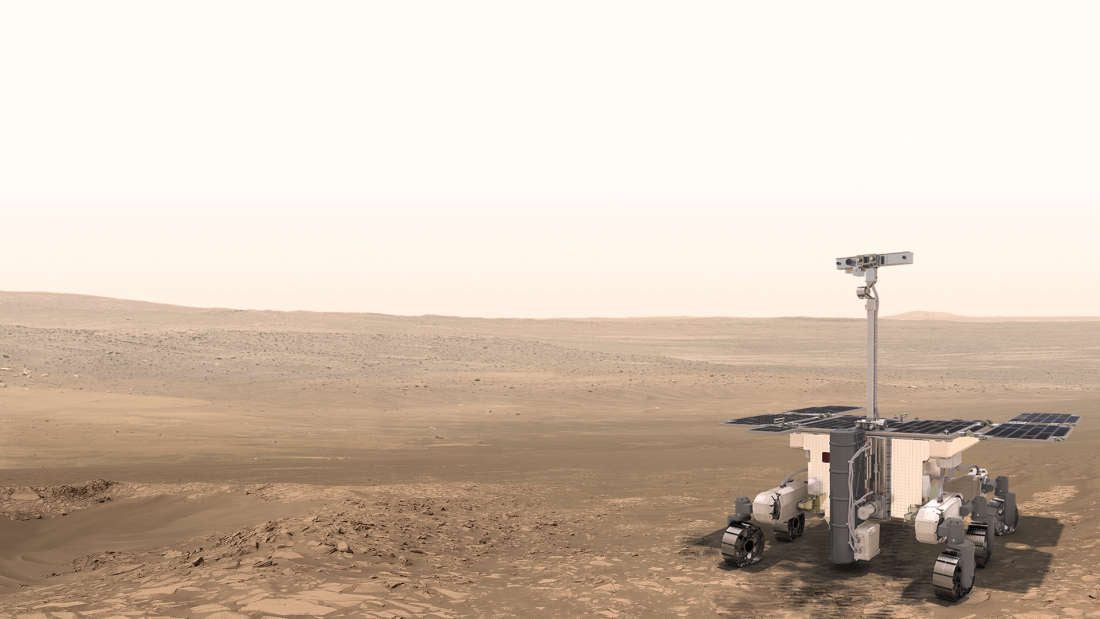
Latest Mars Rover Launch Delayed Until 2022 Due To Coronavirus Outbreak.
Share
The European Space Agency (ESA) and Russia's Roscosmos Space Corporation have unfortunately announced their second joint Mars mission involving the Rosalind Franklin Mars Rover will be shelved until sometime in late 2022.
The ExoMars (Exobiology on Mars) mission has been postponed due to the need to "maximise the robustness" of all systems required to reach Mars and the "epidemiological situation in Europe which left our experts practically no possibility to proceed with travels to partner industries" said Roscosmos Director General Dmitry Rogozin.
The launch was expected in July to put the Rover on the planet's surface by mid-March 2021, however, the new timeline suggests a launch sometime between August and October 2022.
This also means the Rover is expected to reach the crusty brown surface of Mars in April 2023.

At this point in time, the Rosalind Franklin Rover has passed all hardware tests including thermal and vacuum tests to withstand the hostile environment of Mars' surface.
Her unique equipment is purpose-built to drill and dig into Mars' crust in the hopes of sifting through soil samples for signs of ancient life and find evidence of water on the planet.
Its two-metre-long core drill will dig out samples of Martian soil which will then be processed and analysed using the Mars Organic Molecule Analyser (MOMO).
In addition, it will be able to study the powder which results from crushing samples collected by the core-drill using the MicrOmega-IR infrared hyperspectral microscope, while the Raman Laser Spectrometer will help identify organic compounds.
The delay gives the Rosalind Rover the best chance at a successful mission with minimal margin for error.
ESA director Jan Wörner commented on the decision to delay stating that launching prematurely without the full strength of the collaboration between the ESA and Roscosmos could be a costly disaster.
"We want to make ourselves 100% sure of a successful mission. We cannot allow ourselves any margin of error. More verification activities will ensure a safe trip and the best scientific results on Mars. I want to thank the teams in (the) industry than have been working around the clock for nearly a year to complete assembly and environmental testing of the whole spacecraft. We are very much satisfied of (sic) the work that has gone into making a unique project a reality and we have a solid body of knowledge to complete the remaining work as quickly as possible."
In October 2018, ExoMars Delivery Manager Abbie Hutty of the ESA has said:
"I can see it all coming together but something could go wrong at launch or landing and then that's that. Those are the types of things you can't control so you have to concentrate on the things which you can."
She also added the element of luck involved with landing as well:
"If you think about Earth, you'd get very different results landing in London compared with the Sahara desert for example."

The first stage of the ExoMars mission is the ExoMars Trace Gas Orbiter which is currently circling the planet as it attempts to detect minute levels of methane from the planet's surface.
Even minuscule levels of methane can indicate biological processes occurring on Mars.
Stage Two is the implementation of the Rosalind Franklin Rover on the surface of Mars to work in league with the Trace Gas Orbiter.
The Rosalind Rover is made of carbon fibre and still weighs a hefty 300kg with particular wheels for navigating the dry, sandy terrain unique to Mars.

The radiation levels on Mars also present some issues for the Rovers.
With near no atmosphere and magnetic field to deflect the radiation, the onboard computer systems on the Rovers are constantly under attack.
Add to this the highly fluctuating temperatures on Mars from as low as −153 °C and a high as 20 °C and the equipment is under incredible strain.
We wish the best for the Rosalind Franklin Rover and team in the build-up and hope you all stay safe.
Love spreading ARSE?
Tag and share with your mates to spread ARSE far and wide!
#Space_Aus




